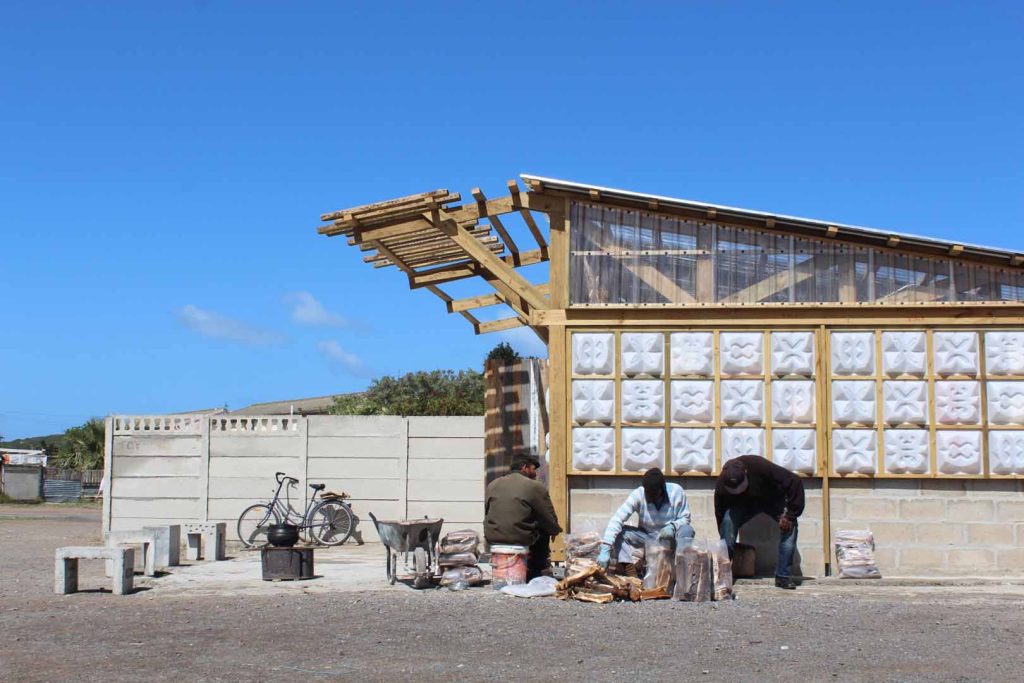In 2017, local youth from Macassar, a community in the Western Cape of South Africa were trained to document their world through a street photography project. In 2018, the young people designed and built temporary installations located in several spaces in the community to exhibit the project. The exhibition aimed to imagine a contemporary cultural place by connecting local spaces through storytelling practices. During the exhibition many residents were inspired to recognize the contributions of self-made spaces that have been created in the community. It became evident that a more permanent space where storytelling and other community-building initiatives could continue was needed. In 2019, forty university students from South Africa and Germany collaborated with the community, a process facilitated by the local non-profit Studiolight. Together they identified, designed, and constructed a storytelling space with the broader community.
Cause
Well-known resident Thomas Adonis’ shack, known by locals as Bong’s Place, was identified as a space that could be refurbished to test building ideas and techniques at a 1:1 scale. The original shack was a timber structure that was clad with corrugated metal sheeting and had gradually grown in size over time. The refurbished shack is located in front of Adonis’ home. To enter the main house, one passes through the community space of the shack. The new structure of the refurbished shack affirms the boundaries of the original shack, but the height and circulation through the space were rethought to optimize community use. Students designed and built timber roof trusses, timber columns, installed steel base plates, built walls, made doors, gates, and fences, while members of the local community paved the inside floor, welded gates, installed the roof sheeting, and did the electrical work. The materials used in the refurbishment were recycled from the previous year’s exhibitions installations while new timber was used to make the roof.
Method
Multi-disciplinary engagement with students from the University of Applied Sciences Düsseldorf, Aachen University, Cape Peninsula University of Technology, and the University of Cape Town demonstrate this project as an example of inter-university collaboration with local community culture, skills, and knowledge exchange. The project facilitated engagement between community members and students through activities that included an introduction to local culture, building techniques, workshops, meal sharing, and storytelling events. Storytelling workshops further enabled collaboration, supporting knowledge exchange and reflection between teachers, researchers, students, and the community.
Impact
The team managed to create a space that programmatically complemented the existing local self-made spaces by tapping into a long-term project with deep local knowledge and doing thorough analysis through field trips, interviews, and architectural ethnographic drawings. The calendar of the Storytelling Shack is booked by many locals and used for various activities that previously had no place. The shack has been widely accepted by the community because of a continued involvement encouraged by Studiolight.

